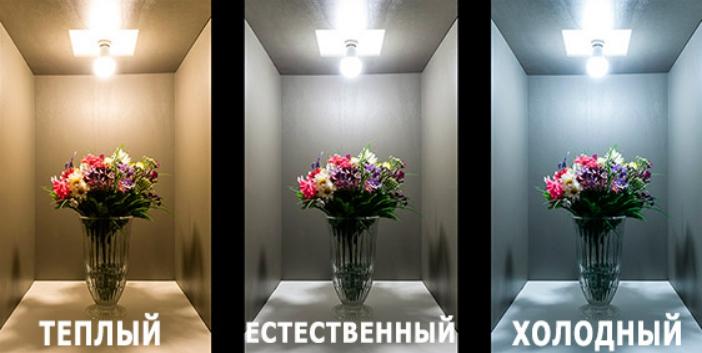Types of urban street lighting and their features
City street lighting is necessary to improve visibility at night and increase safety for drivers and pedestrians. Quality lighting improves the appearance of the city and positively affects the comfort of residents. Drivers can control the traffic situation much better, and pedestrians can stroll without fear of becoming a victim of criminals.
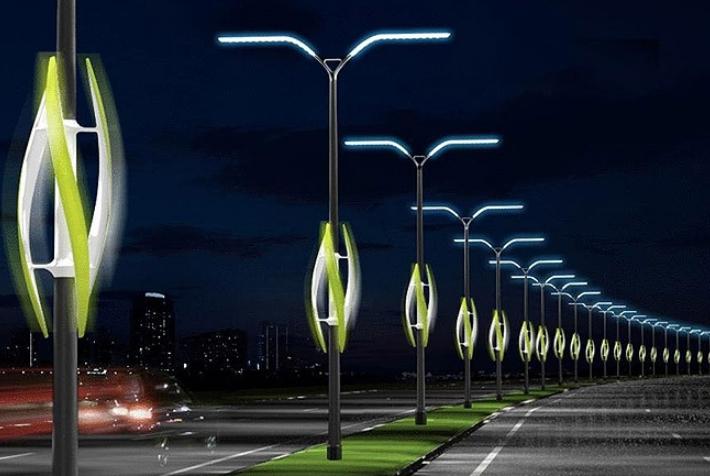
The concept of urban street lighting
City lighting is not just about installing lights in poorly lit areas. This part of the work is usually included in the planning of neighborhoods and new streets, it is required to conduct the wiring and choose the options that best fit the environment.
Features and rules of organization
To provide quality lighting, you need to consider a number of important aspects. They can vary depending on external conditions and other features. But the basic ones are always the same:
- It is necessary to think about the prospects for the development of the neighborhood and the emergence of new facilities. Plan at least 10 years in advance so that you do not have to redo the lighting plan afterwards.
- Take into account the number and characteristics of existing lighting equipment. It can be either an addition to existing systems with or without modernization, or a complete replacement if it is not possible to combine new and old equipment.
- Select solutions that are suitable in terms of performance and energy efficiency. They must comply with current technical regulations. Technology is evolving and new options are emerging to further increase efficiency and reduce energy consumption.
- It is mandatory to take into account the peculiarities of the streets and facilities located nearby. This affects both the method and location of installation, as well as the choice of power and the layout of the correct location.
- Take into account the additional features that lighting can perform. For example, if sidewalks are located near the roadway, lights can simultaneously illuminate the roadway and pedestrian area.
- Select options that provide the highest level of safety. Fault tolerance and service life are important so that the lights do not have to be constantly serviced.
- A comfortable lighting environment should be created that fits into the overall urban concept. Very often there is a finished plan, which details the requirements for street lighting, which greatly simplifies the design and selection of equipment.

By the way! When organizing lighting must also take into account the weather conditions, as they can significantly reduce visibility.
Requirements for utilitarian street lighting
Utilitarian urban street lighting involves the use of streetlights for purely practical purposes. They should provide good visibility of the roadway, pedestrian or yard area and highlight particularly dangerous areas to pay attention to. But the aesthetic side should not be overlooked, so the requirements for utilitarian lighting are:
- The grit and reflectivity of the pavement is taken into account. This affects the choice of power lights and determine the number needed to achieve the desired effect.
- The layout of lights is selected depending on the width of the road surface. If the road is not wider than 12 meters, it is enough to put lights on one side. In cases where the width of about 18 meters, use a staggered arrangement of equipment. If there are several lanes and the road is no more than 32 meters across, a rectangular staggered arrangement is used.
- All options for street lighting must take into account the architectural and artistic appearance of the settlement. This requirement is specified in paragraph 10.16 of SNiP 2-4-79.
- For lighting crosswalks there is a lamp on each side. Here is an important point - the lamp should be located on the right side of the pedestrian, so the driver can better see him.
- It is important to consider the amount of precipitation in the region and their nature. The lanterns should provide normal visibility even in the most difficult weather conditions.
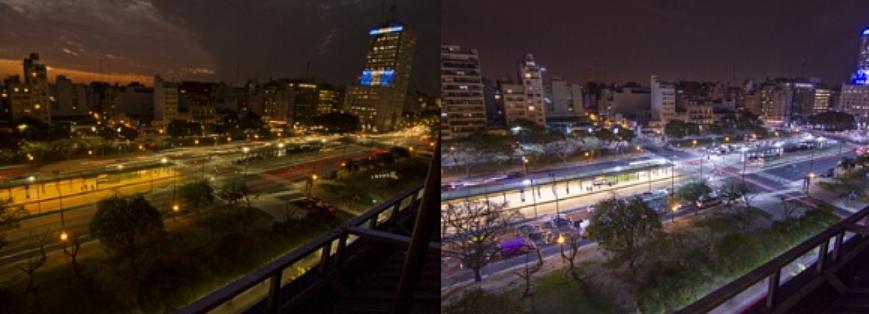
By the way! Light noises should not be overlooked, as there are many billboards, decorative elements of facade illumination, etc. in cities.
What's the best light, hot or cold?
Color temperature - an important aspect, as the urban street lighting is selected taking into account its impact on people. You can achieve this effect:
- Cold light distorts color rendering, but it makes objects stand out much more clearly in the dark and provides visibility at a greater distance. White light improves tone and helps drivers stay focused and not get distracted while driving. It is most suitable for highways and crosswalk lights.
- The warm white light has a yellowish hue, which gives the streets a special comfort and tranquility. These lights are suitable for creating a relaxing environment in pedestrian and park areas.
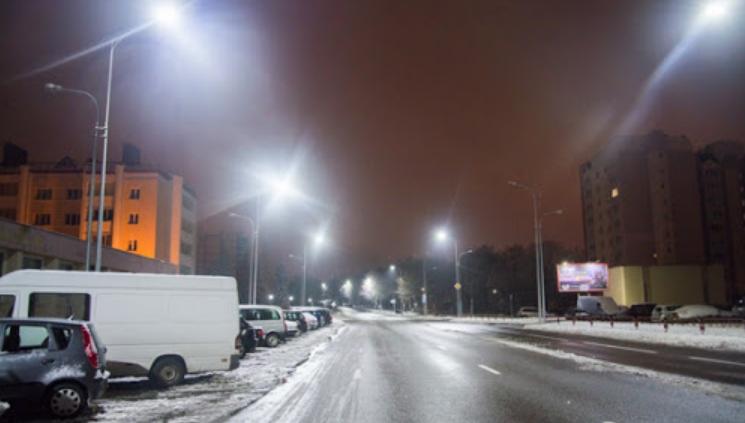
Place both options next to each other is not worth it, as it does not look good.
Types of street lighting
Types of street lighting come in different forms and differ in several factors. If you study them, it is easy to understand the features of equipment and choose the option for any locality.
By purpose
Lamps are used for different purposes. For each developed their own options, and they should be applied:
- Models with a reflector concentrate the light on a certain section of the road, helping to use the available light flux with the greatest benefit. Due to the location of the lamp at a considerable height, it illuminates a large area of the road and the lights can be placed at a greater distance from each other. This option is used on highways, urban roads and other places with heavy traffic.
- For less busy roads, variants that combine diffuse and reflector lighting are used. Usually use models with a relief plafond of transparent material, scattering light over a large enough distance.
- If it is necessary to illuminate sidewalks, walkways, bicycle paths, street squares or public transport stops, diffuse lighting is used. Most often the plafonds are cylindrical or spherical in shape.
- Lighting can be used to illuminate signs, directional signs and other informational objects. Most often it is spotlights and lamps, the light of which is directed to a specific object.
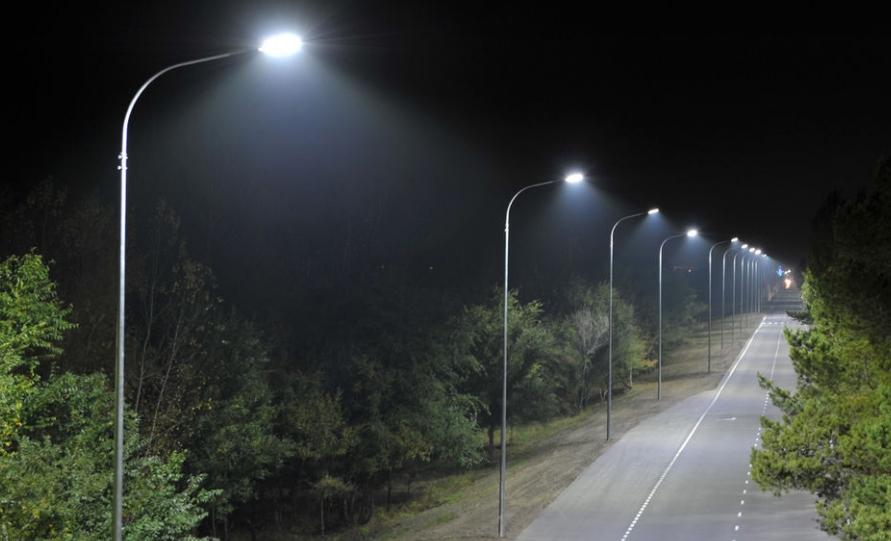
To illuminate other objects lights are chosen according to the situation, depending on the requirements of the project.
By type of light source
Types of street lamps can be different, since they use several types of lamps. Each option has its own features that you need to be aware of. The most numerous and common group are gas discharge lamps, and they come in three varieties:
- Mercury lamps work by electrically discharging mercury vapor. A starter is needed for operation, and a certain amount of time is needed for warm-up and stabilization during start-up. During operation, the bulb gets very hot, the device requires a high voltage. If it decreases, the lamp will not start. Luminescence is due to the phosphor, which is coated on the inner walls of the bulb.
- Metal halide lamps are characterized by the presence of metal halides in the mercury vapor. This provides high luminance of the lamps and they can illuminate large areas, so they are mainly used in open areas of the road. The light temperature is close to natural, this variant is used more and more often instead of traditional mercury models.
- Sodium lamps. They work due to the fact that when energy is applied in sodium vapor, a gas discharge is formed. The equipment provides a warm yellowish light, suitable for the decoration of city streets. While highly effective, this type requires optimal working conditions and does not tolerate temperature fluctuations well. That is why sodium lamps are housed in bulbs made of borosilicate glass.

A video will tell you about the types of street lamps
In addition to discharge lamps, many other options are used:
- Incandescent bulbs.. The traditional solution, which is also used for street lighting. Its main advantage is the low price, but the service life is the shortest and the electricity consumption is high.
- Halogen lamps - An improved form of incandescent bulbs, in which halogen vapors are pumped inside to improve the performance. This improves performance - the light is brighter, and the service life is longer by about 2 times.
- Xenon versions work by means of an electric arc that occurs when electricity is applied to the tungsten electrodes. Different compositions are pumped into the flask, from mercury and sodium salt vapor to inert gases or metal vapor. Depending on the filler, the characteristics change. The models are characterized by good light, which ensures visibility even in difficult weather conditions.
- Fluorescent models are characterized by high efficiency and low power consumption. Due to the advent of electronic control units, this type has become much more stable, with even lower power consumption and longer service life. Worst tolerate frequent switching on and off, so suitable for outdoor lighting, where the lights are started once a day.
- Induction lamps refer to gas discharge lamps. But there are no electrodes in the design, which prolongs the life of the products, and they retain their original parameters for their entire life. The light is produced by the plasma that is generated when a high frequency field is applied to the gas. An inductance coil is attached to the lamp to ensure normal operation.
- LED equipment. Lamps of this type consume a minimum of electricity, while the light is of high quality and even. The light temperature can be any, it all depends on the diodes used. Lamps are compact and fit into small plafonds, with excellent lighting quality, the only problem - the high price of equipment.
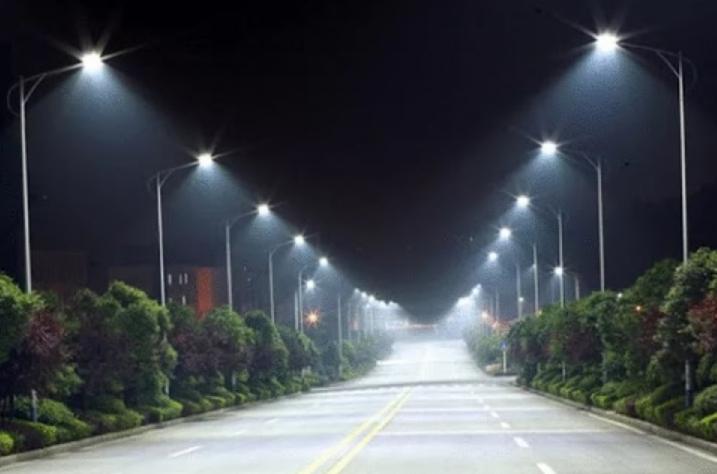
Usually one type of lamp is used in the street, so that the lighting is uniform.
By type of support.
Lanterns can be attached to different structures, so there are several basic types:
- Concrete poles are the most common solution, used most often. Elements are made of concrete, reinforced with metal. On top is usually put a tubular post or several to fix the lamps.
- Metal structures are also well suited for the installation of lanterns, as with a little weight have high strength. There are different types - for roadways use more severe options, for pedestrian areas use supports with forged elements and other decorations, they can be both steel and cast iron.
- Wooden poles are almost not used, as the material is not very reliable and lasts less than its counterparts. But in some old neighborhoods, as well as in villages, they are still preserved today.
- Products made of composite materials have appeared recently, but they are put more and more often. Such poles are not afraid of moisture and frosts, are lightweight and last for decades.
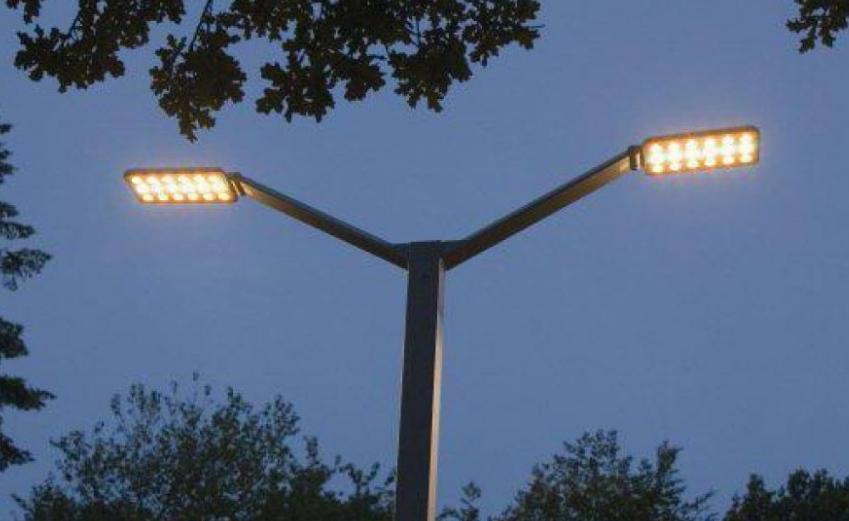
A separate type of lighting - lights on cables stretched between two poles, or on metal crossbars, which are fixed between the poles on opposite sides of the road. In some cases, the equipment is mounted on walls.
According to the way the power sources are controlled
Street lighting can be controlled in different ways, we can distinguish these types:
- Manual control. In this case, switching on and off is done manually by the operator on a special remote control.
- Automatic control units. With their help, you can program the time of switching on and off the equipment. You can also set the brightness of lighting to dim it at certain periods and save electricity.
- The photocells allow you to turn the lights on at dusk. The system is completely self-contained and does not need to be adjusted for the seasons, as it responds to the actual situation.

Now there are fully autonomous solar-powered variants. They don't even need wiring, the system stores energy in a battery during the day and when dusk comes, a photovoltaic cell turns on the lights, which lasts until the next morning.
We recommend that you watch:
Features of lighting in city parks and other recreation areas
In this case, the requirements for lighting are different from the standard. The main focus is on the aesthetic side. Light should not only provide good visibility, but also to highlight individual elements and emphasize the beauty of nature. Here different solutions are used:
- Sidewalk lights can be in the form of posts of small height or be built-in to illuminate the surface. This is a beautiful solution that makes walkways stand out.
- LED strips and hanging garlands can be attached to poles as well as to trees or any other elements. They not only provide good lighting, but also make a park or recreation area look smart.
- Hanging lights can be installed on any poles, stretched cables or other structures. Good for mounting on the walls of buildings.
- Spotlights, located at a height of 3 m and illuminate the area or a separate zone in the park. Also such equipment can accentuate certain places.
- Lanterns with lanterns of diffused light. Most of them are decorative elements with round shades and yellow light that creates a comfortable quiet lighting.
- Different equipment to illuminate individual objects.
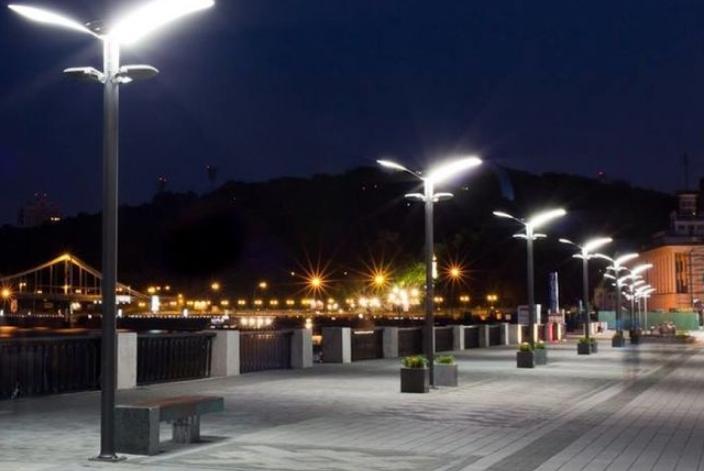
Street lighting has specific features, but if you consider them in detail, it is not difficult to understand this type of equipment. It is worth selecting lights for specific conditions and take into account the requirements prescribed in SNiP and the design documentation of the settlement.
